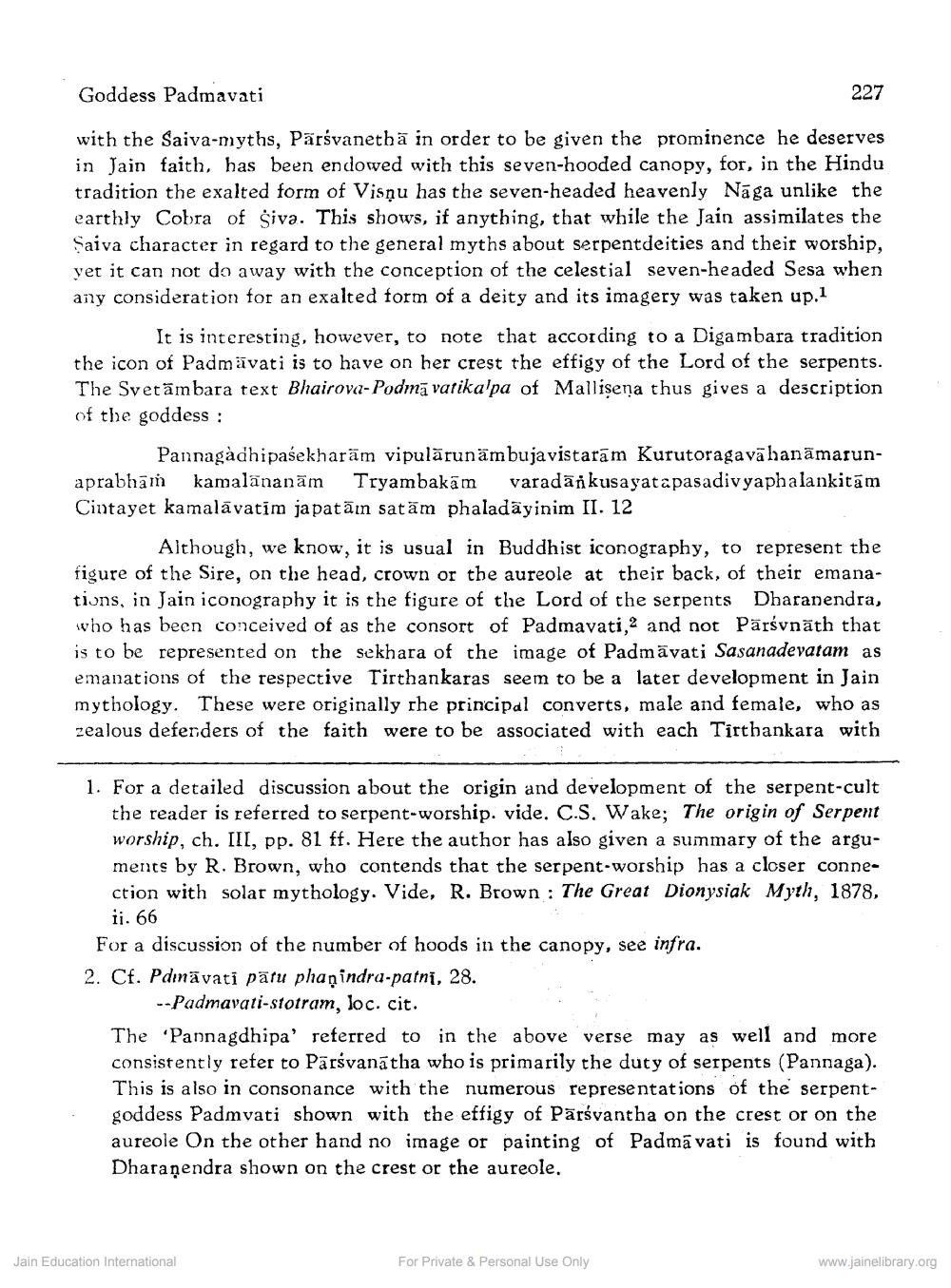Book Title: Introduction to Iconography of Jain Goddess Padmavati Author(s): A K Bhattacharya Publisher: Z_Jinvijay_Muni_Abhinandan_Granth_012033.pdf View full book textPage 9
________________ Goddess Padmavati with the Saiva-myths, Pärsvanetha in order to be given the prominence he deserves in Jain faith, has been endowed with this seven-hooded canopy, for, in the Hindu tradition the exalted form of Visnu has the seven-headed heavenly Naga unlike the earthly Cobra of Siva. This shows, if anything, that while the Jain assimilates the Saiva character in regard to the general myths about serpentdeities and their worship, yet it can not do away with the conception of the celestial seven-headed Sesa when. any consideration for an exalted form of a deity and its imagery was taken up.1 It is interesting. however, to note that according to a Digambara tradition the icon of Padmavati is to have on her crest the effigy of the Lord of the serpents. The Svetambara text Bhairova-Podma vatika'pa of Mallisena thus gives a description of the goddess: 227 Pannagadhipasekharäm vipulārunāmbujavistarām Kurutoragavä hanamarunaprabham kamalananām Tryambakām varadankusayat apasadivyaphalankitām Cintayet kamalavatim japatam satăm phaladayinim II. 12 Although, we know, it is usual in Buddhist iconography, to represent the figure of the Sire, on the head, crown or the aureole at their back, of their emanations, in Jain iconography it is the figure of the Lord of the serpents Dharanendra, who has been conceived of as the consort of Padmavati, and not Parsvnath that is to be represented on the sekhara of the image of Padmavati Sasanadevatam as emanations of the respective Tirthankaras seem to be a later development in Jain mythology. These were originally the principal converts, male and female, who as zealous defenders of the faith were to be associated with each Tirthankara with 1. For a detailed discussion about the origin and development of the serpent-cult the reader is referred to serpent-worship. vide. C.S. Wake; The origin of Serpent worship, ch. III, pp. 81 ff. Here the author has also given a summary of the arguments by R. Brown, who contends that the serpent-worship has a closer conne ction with solar mythology. Vide. R. Brown: The Great Dionysiak Myth, 1878, ii. 66 For a discussion of the number of hoods in the canopy, see infra. 2. Cf. Pdmavati pătu phanindra-patni, 28. --Padmavati-stotram, loc. cit. The 'Pannagdhipa' referred to in the above verse may as well and more consistently refer to Pārsvanatha who is primarily the duty of serpents (Pannaga). This is also in consonance with the numerous representations of the serpentgoddess Padmvati shown with the effigy of Parsvantha on the crest or on the aureole On the other hand no image or painting of Padmavati is found with Dharanendra shown on the crest or the aureole. Jain Education International For Private & Personal Use Only www.jainelibrary.orgPage Navigation
1 ... 7 8 9 10 11
